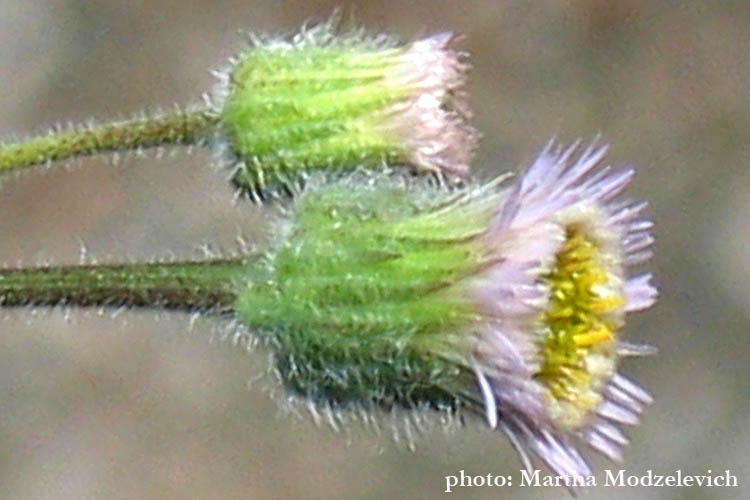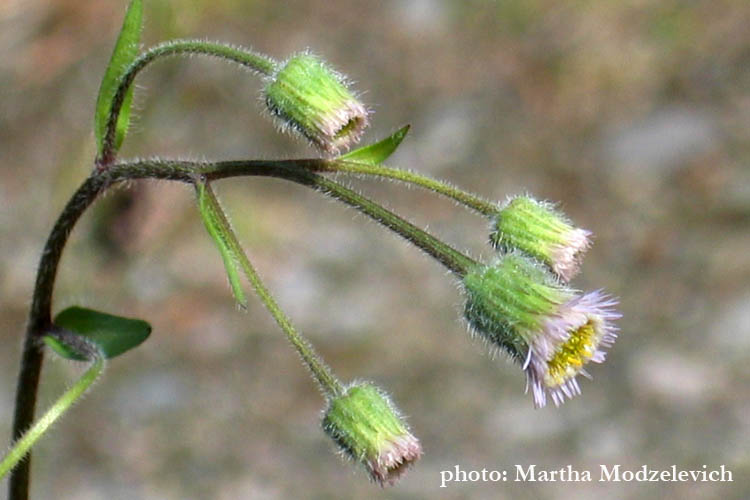|
|
| Life form: |
| Annual |
| Stems: |
| Hairy, slender and upright, often red or purple. |
| Leaves: |
| Entire, lanceolate, dentate or serrate |
| Flowers: |
| Flower-heads 12 mm across in a small loose panicle; involucral bracts numerous, narrow, pointed and hairy; outer florets purple, usually 2 rows, ligulate, slender and nearly erect; inner florets tubular and yellow |
| Flowering Period: |
| July, August |
| Fruits: |
| An achene, pappus of long, reddish unbranched hairs |
| Habitat: |
| Coast, farmland, settlements |

Derivation of the botanical name:
Erigeron from the Greek eri, "early"; geron, "old man", a reference to the appearance of the white hairs of the fruit soon after flowering,
acer, "sharp, pungent"
- The standard author abbreviation L. is used to indicate Carl Linnaeus (1707 – 1778), a Swedish botanist, physician, and zoologist, the father of modern taxonomy.
- The standard author abbreviation Gray is used to indicate Samuel Frederick Gray (1766 – 1828), a British botanist, mycologist, and pharmacologist.
|


